Food is far more than sustenance; it is a reflection of culture, identity, and history. In ancient Bharat, food was deeply intertwined with spirituality and community, showcasing the wisdom of Ayurveda and the diverse regional practices that have shaped our culinary landscape. Join me on this fascinating journey through the history of food in ancient India, from the Vedic age to the present day.
Table of Contents
- Introduction to the Role of Food
- Beverages: Ancient Drinks of Bharat
- Sweeteners: The Taste of Tradition
- Meat: Sources and Consumption Practices
- Dairy: A Vital Component of Ancient Cuisine
- Fats: The Origins of Culinary Oils
- Food Processing Techniques: Thermal, Mechanical, and Chemical
- The Typical Spread: What Did People Eat?
- Scriptural Sources and Timelines of Food Practices
- Vedic Period: Rituals and Food
- Ramayana: Culinary Insights from the Epic
- Mahabharata: Food References in the Epic
- Indus Valley Civilization: Evidence of Ancient Diet
- Mahajanapadas Period: Trends in Food Culture
- The Origins of Biryani: A Culinary Exploration
- Conclusion: The Sacred Thread of Food in Bharat
- FAQs
Introduction to the Role of Food
Food is a vital part of our existence. It serves not only as nourishment but also as a medium through which we express our identity and culture. In ancient Bharat, food was much more than a meal; it was a spiritual experience, a connection to the past, and a celebration of community. The way we prepare and consume food reflects our values, traditions, and beliefs.
Three Lenses of Food: Personal, Cultural, and Scientific
When we think about food, we often view it through three distinct lenses: personal, cultural, and scientific. Each lens offers a unique perspective that shapes our relationship with what we eat.
- Personal: This lens is about individual preferences. What do you like? What do you dislike? Your taste buds play a crucial role in this filter.
- Cultural: Here, food choices are influenced by customs and traditions. Certain foods may be avoided or embraced based on cultural practices.
- Scientific: This lens focuses on nutrition and health. Some foods are chosen for their health benefits or due to dietary restrictions.
Understanding these lenses helps us appreciate the complexity of our food choices. However, it’s important to approach the study of food history from a neutral standpoint to truly grasp its significance.
Understanding Food History: Sources and Processing
The history of food is intricate and multifaceted. To comprehend it fully, we must explore two main components: food sources and food processing. Food sources include the various categories of ingredients our ancestors cultivated, while food processing encompasses the methods used to prepare these ingredients.
From the Vedic period to the Indus Valley civilization, the evolution of food is marked by these two aspects. Understanding both allows us to piece together a comprehensive picture of food history in Bharat.
Food Sources: The Ten Categories
To break down the history of food, we can categorize it into ten distinct sources:
- Fruits
- Vegetables
- Cereals
- Pulses
- Spices
- Beverages
- Dairy
- Meat
- Sweeteners
- Fats
Each category plays a significant role in the dietary practices of ancient Bharat, and understanding their evolution is crucial to grasping our culinary heritage.
Exploring Fruits in Ancient Bharat
Fruits have been a staple in the diet of ancient Bharat. Varieties such as kadali (banana), draksha (grapes), and amlaki (gooseberry) were commonly cultivated. These fruits were not only enjoyed for their taste but also held significance in various rituals and practices.
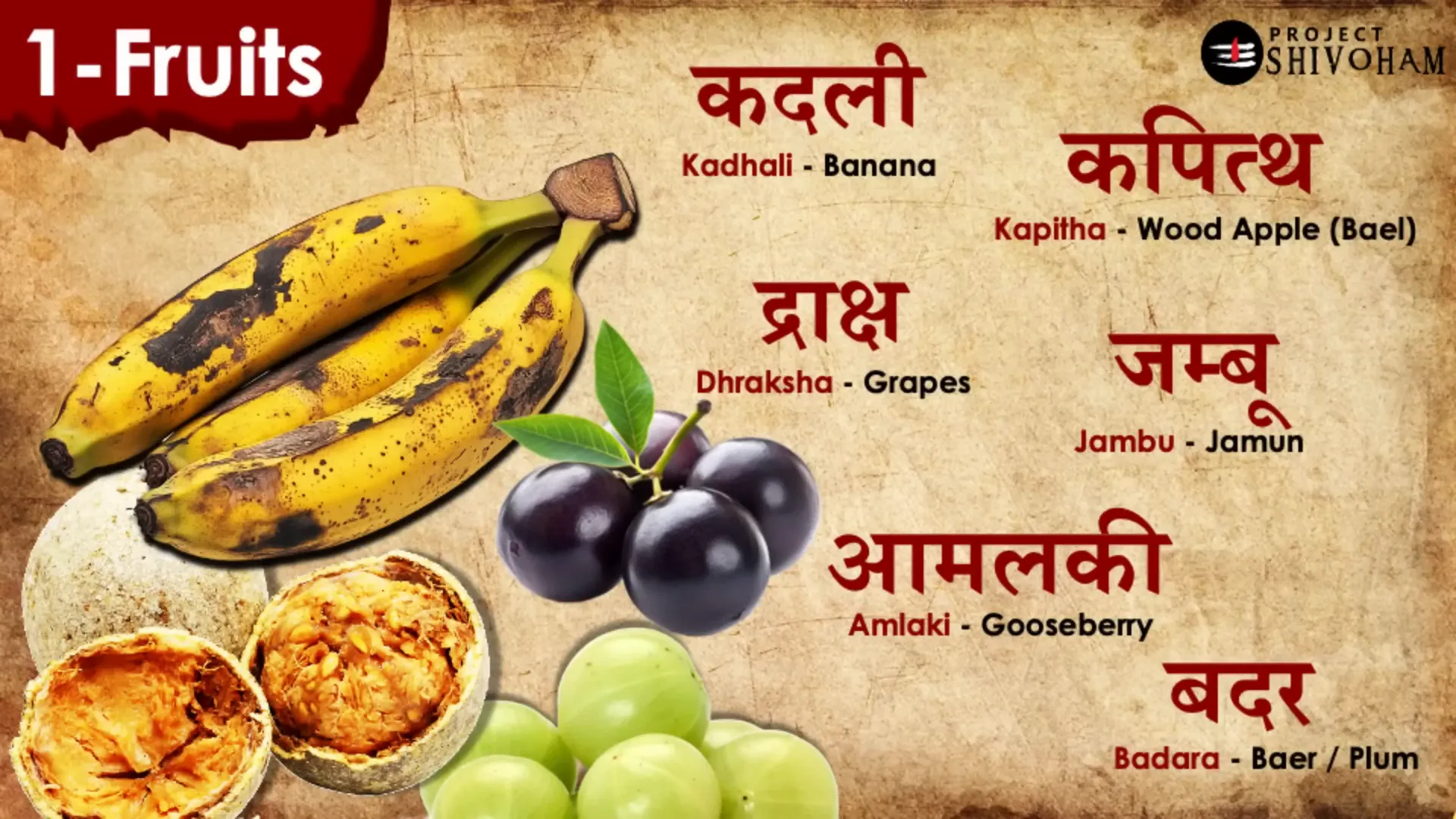
These fruits have withstood the test of time and continue to be integral to Indian households today. Their presence in ancient texts and rituals underscores their importance in the cultural fabric of Bharat.
Vegetables: A Historical Perspective
Vegetables were equally important in the diets of our ancestors. Varieties like uruaruka (cucumber) and lashona (garlic) were cultivated and consumed long before the introduction of potatoes and tomatoes by European colonizers.
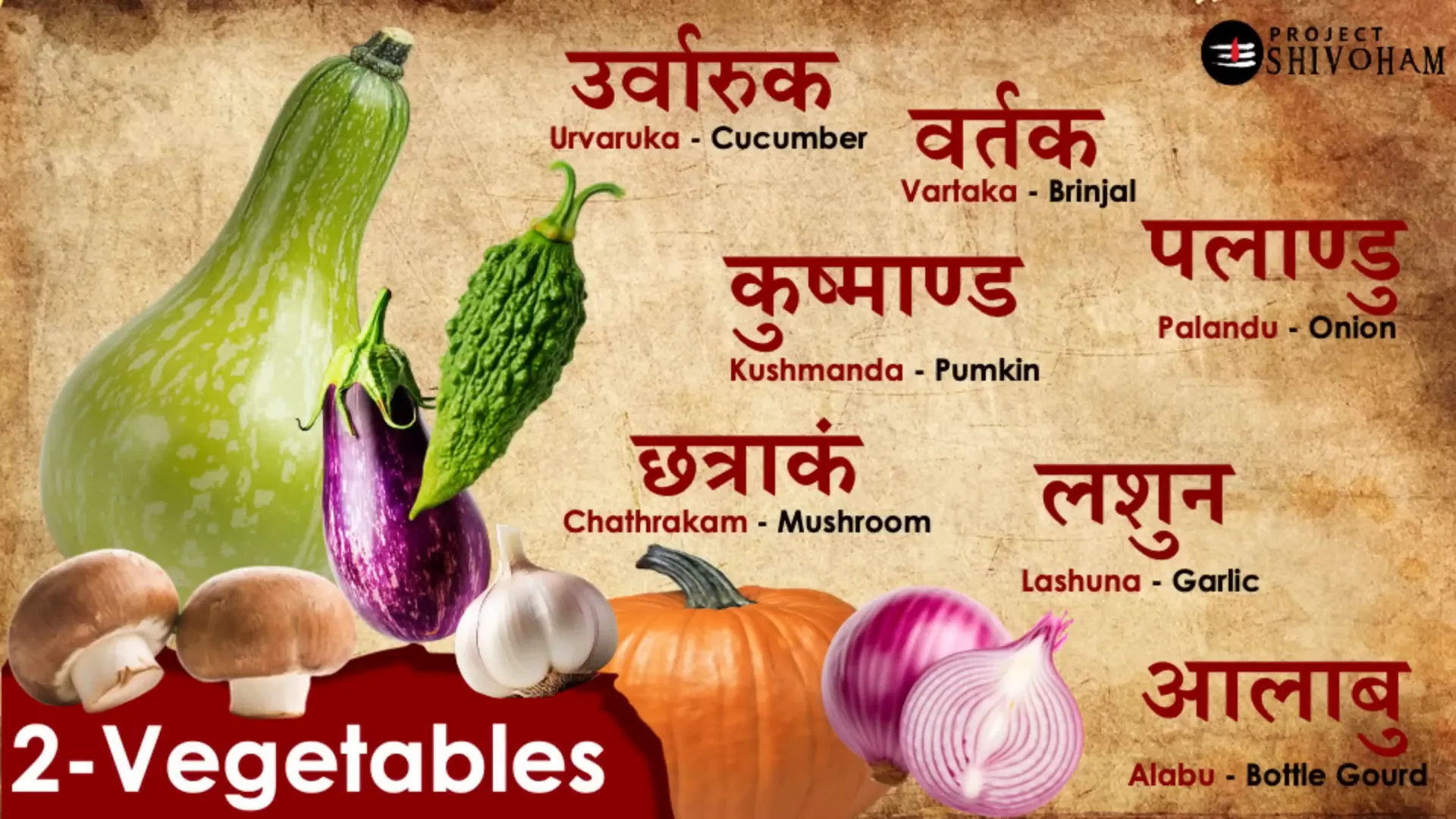
This historical perspective highlights how our diets have evolved while remaining rooted in traditional practices. The vegetables that sustained ancient populations are a testament to their agricultural knowledge and culinary skills.
Cereals: The Staple of Ancient Diets
Cereals formed the backbone of ancient diets in Bharat. Grains such as Godhuma (wheat) and Vrihi (rice) were cultivated extensively. These staples provided essential nutrients and were integral to daily meals.
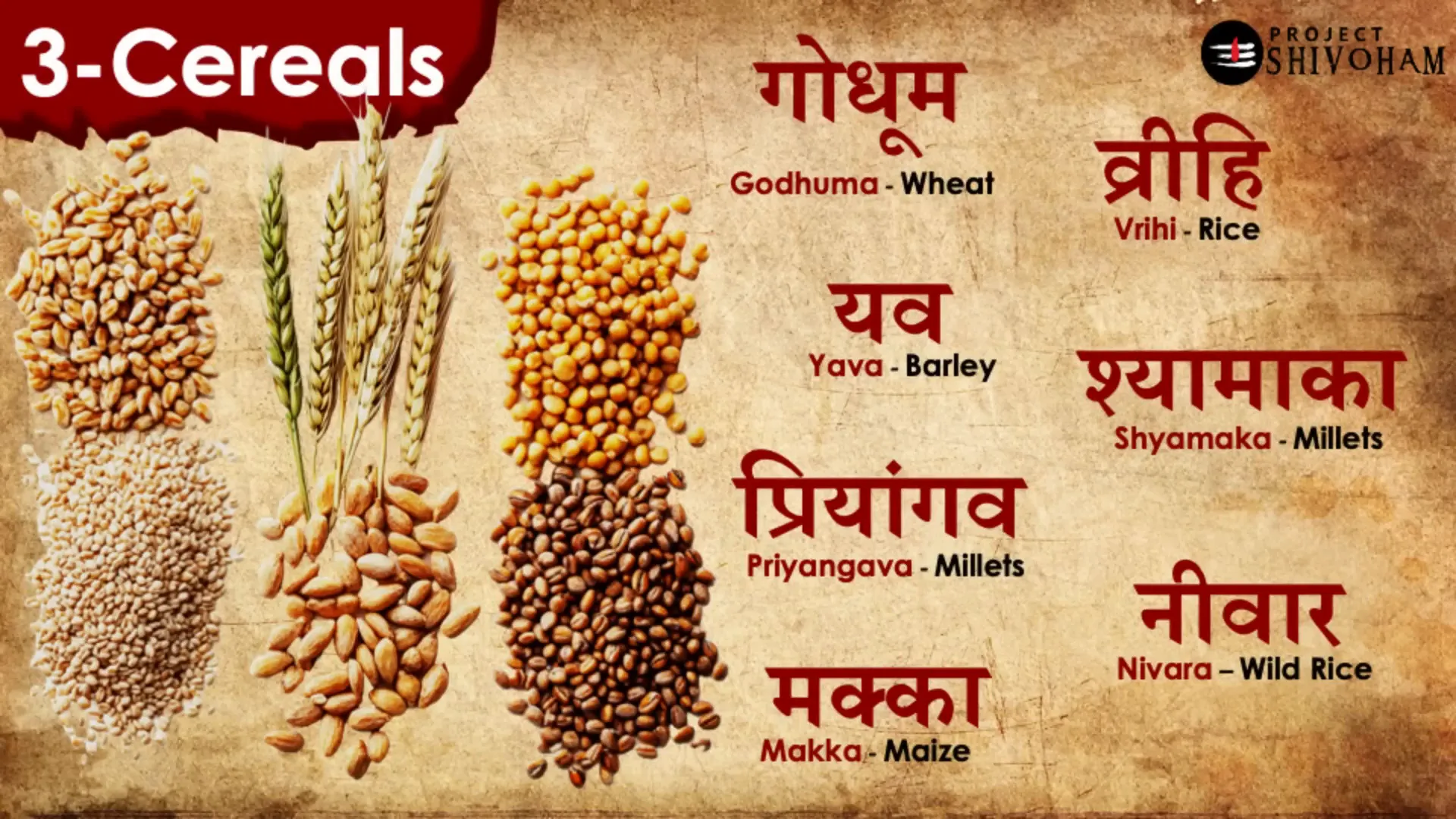
The cultivation of these cereals not only sustained populations but also influenced the agricultural practices and trade routes of ancient Bharat.
Pulses: Nutritional Powerhouses
Pulses were recognized as nutritional powerhouses in ancient diets. Varieties like masura (red lentils) and channa (chickpeas) were commonly grown and consumed.

The importance of pulses extends beyond mere nutrition; they played a significant role in the agricultural practices of the time and were often used in traditional dishes.
Spices: The Flavor of Bharat
Spices were essential in enhancing the flavors of dishes in ancient Bharat. Common spices such as maricha (black pepper) and haridra (turmeric) were used not only for their taste but also for their medicinal properties.
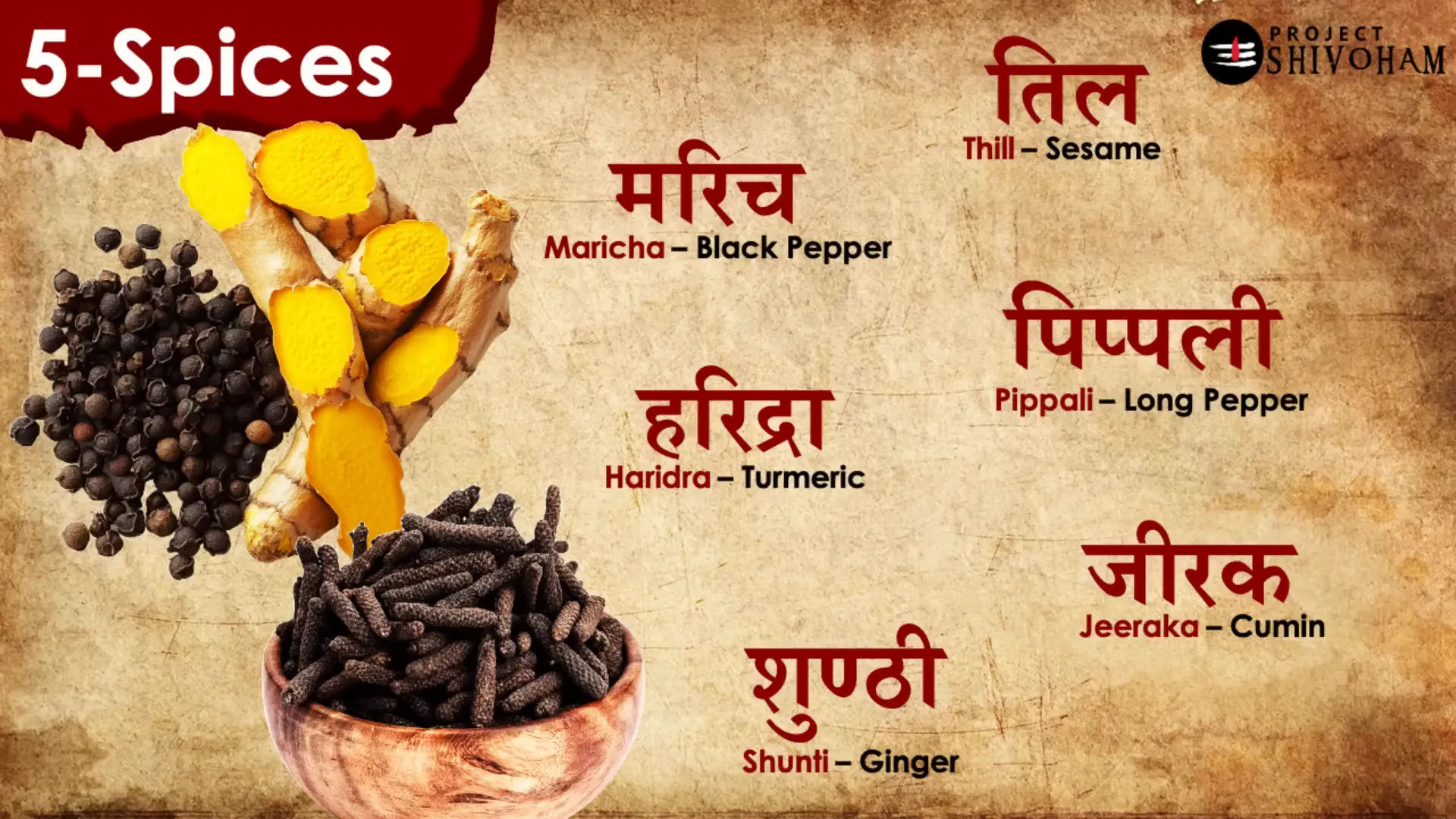
The rich tapestry of spices in ancient Bharat reflects the diverse culinary practices and the cultural significance of food. These spices continue to be celebrated in modern Indian cuisine.
Beverages: Ancient Drinks of Bharat
What kinds of drinks were consumed by our ancestors? The first one is Soma. Soma is a herbal drink and the oldest and grandest drink mentioned in the scriptures of ancient Bharat. No other drink holds such a level of importance as Soma. However, its exact preparation remains a mystery today.
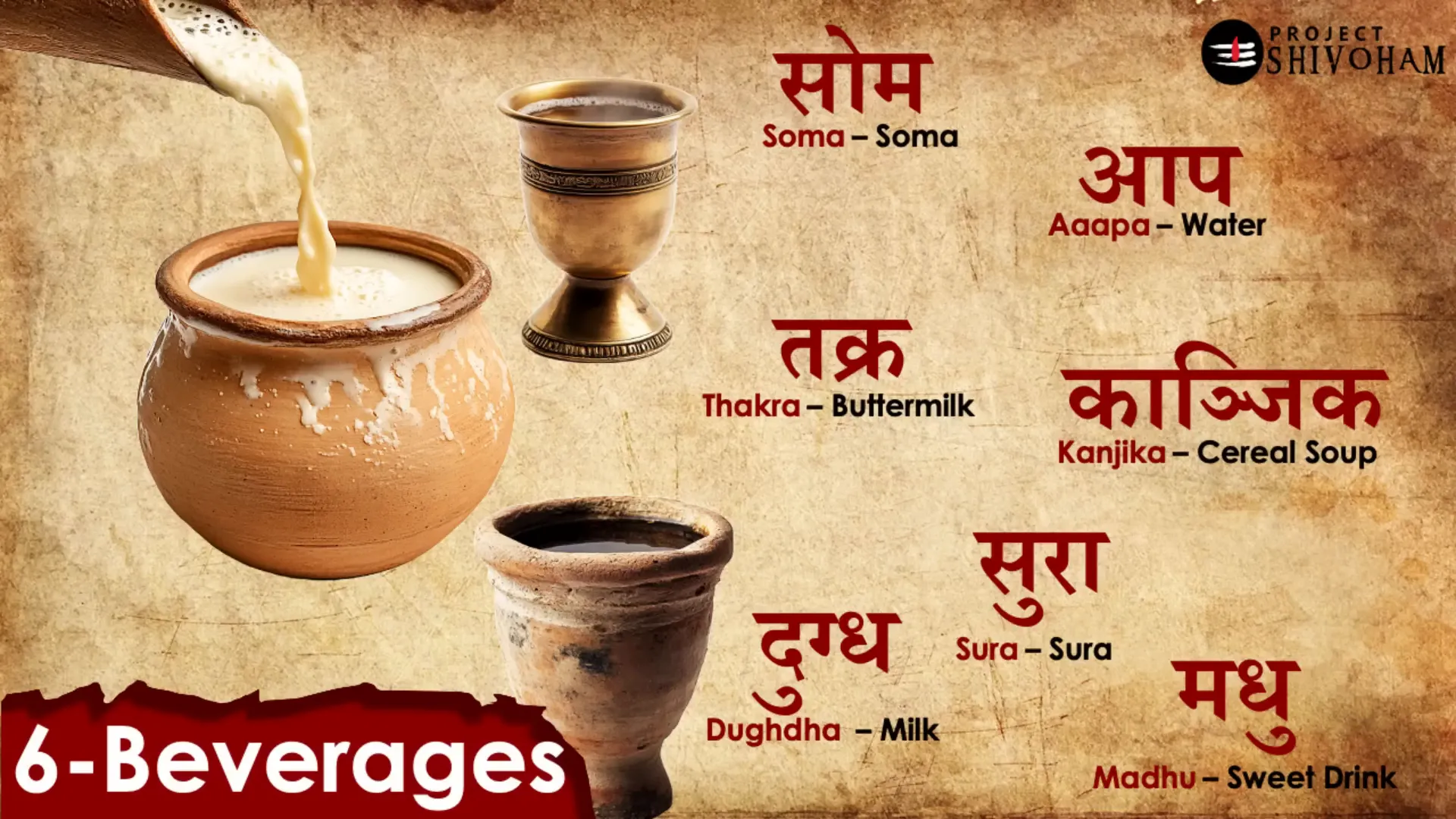
Next, we have tarka, which is buttermilk. Then there is doodha, or milk, derived from the Sanskrit word ‘dudha’. Sura refers to a specific kind of liquor, while appa denotes water.
Kanjika is another interesting beverage; it is a light soup made by boiling rice in water, allowing the starch to dissolve. This residue, known as kanjikar, was served as a beverage in ancient times. Lastly, Madhu is a sweet drink that is alcoholic in nature. These beverages reflect the diverse drinking habits of ancient Bharat.
Sweeteners: The Taste of Tradition
Moving on to sweeteners, the first is Gouda, known today as jaggery. The Sanskrit term is ‘Gouda’. Then we have Makshika, which is honey, followed by talarasa (palm juice), ichsharasa (sugarcane juice), and sharkara (sugar).
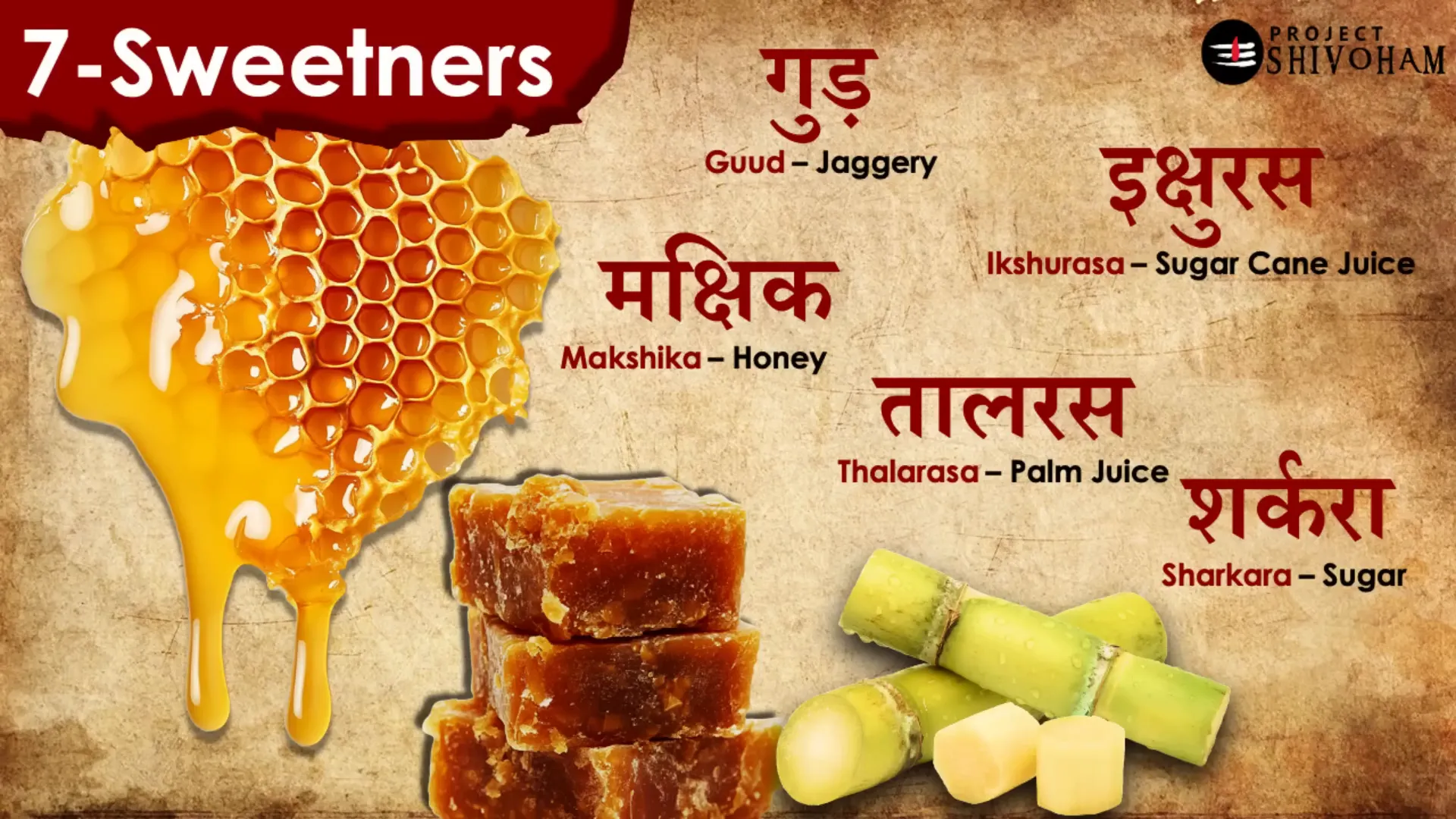
These sweeteners have been central to our culinary practices for ages. Ancient scriptures even detail various honey types, emphasizing how honey from different flowers offers distinct flavors. In fact, there are eight major kinds of honey documented in the texts.
This depth of knowledge showcases the vividness of food history in Bharat. The usage of honey, as a sweetener, speaks to its importance across civilizations and reflects the rich heritage we possess.
Meat: Sources and Consumption Practices
What meat did our ancestors consume? The sources included Mruga (deer or antelope), Vrushabha (bull), aja (goat and sheep), Ashwa (horse), and various pakshi (birds).
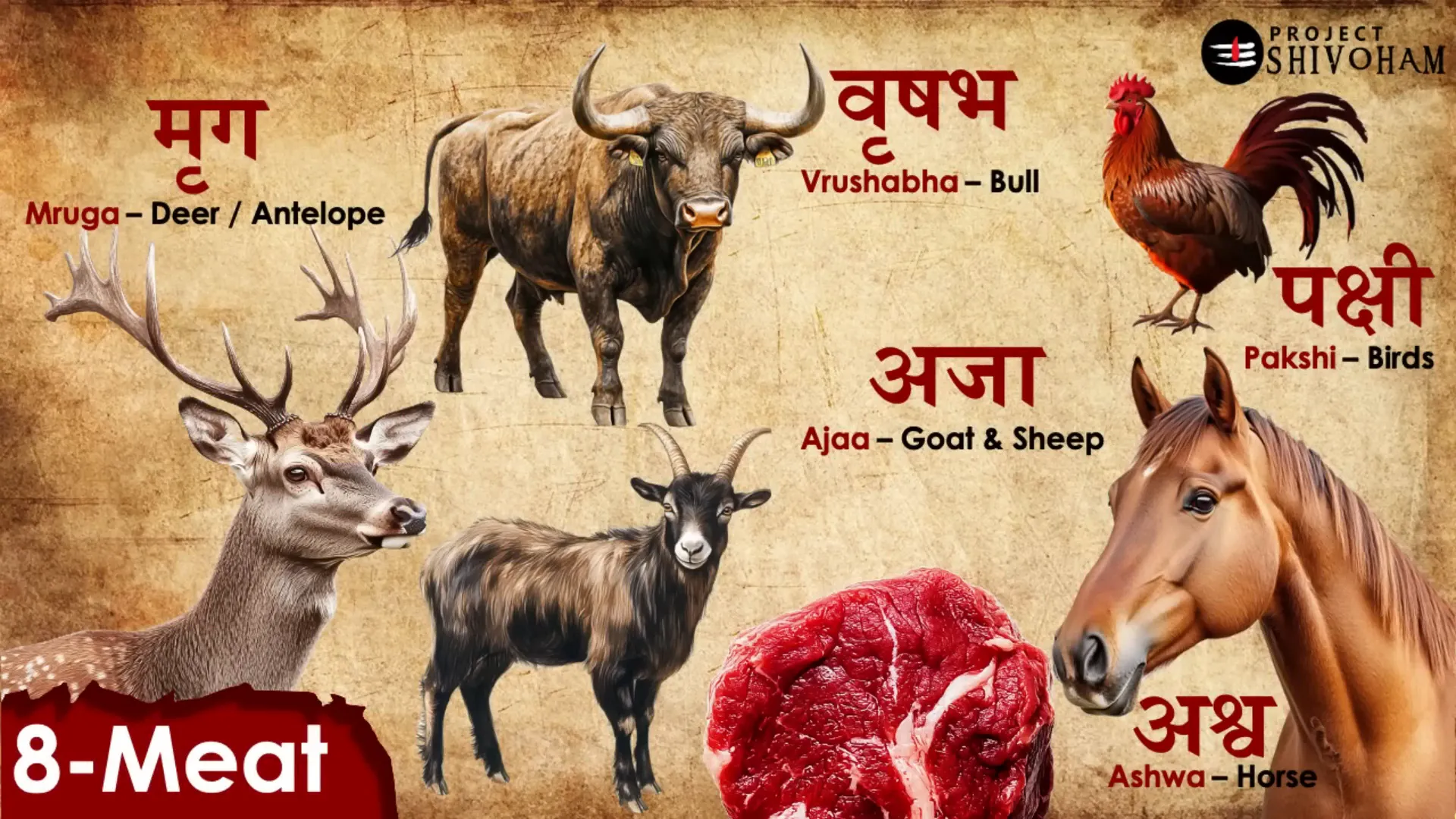
This topic may be sensitive, but it is crucial to understand that meat consumption was an integral part of Vedic culture. Those who deny this either lack awareness or are making unfounded claims. Meat-eating remains prevalent in Hindu traditions, especially in the southern and eastern regions of Bharat, where rituals often include the sacrifice of animals as offerings.
It’s essential to dispel the notion that meat is strictly tamasik and vegetables are sattvic. Such generalizations do not reflect the complexity of our culinary heritage.
Dairy: A Vital Component of Ancient Cuisine
Dairy products form a significant part of ancient Indian cuisine. Key products include Grita (ghee), dougdha (milk), tarka (buttermilk), daddhi (curd), and navanita (butter).
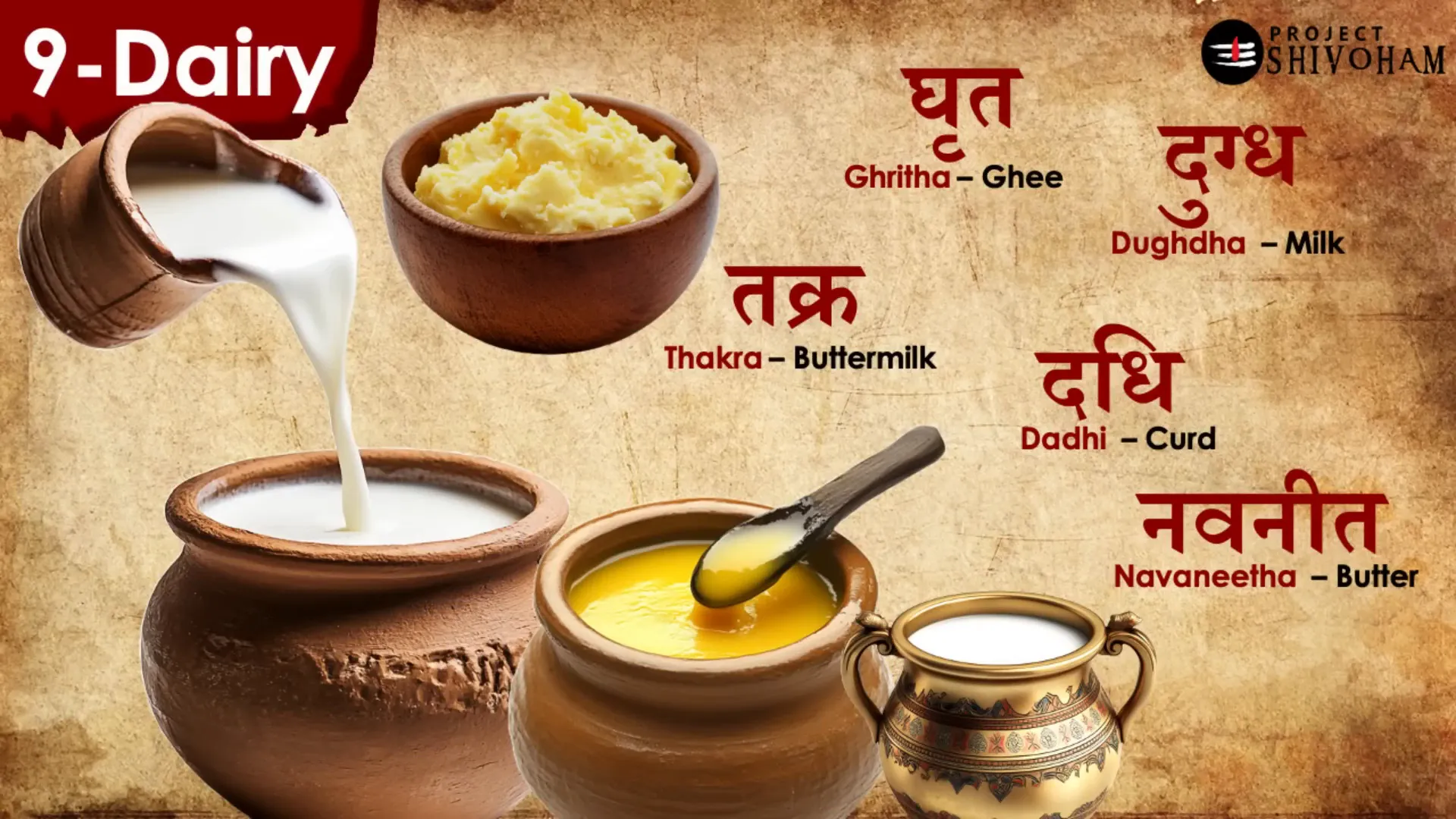
The primary source of this dairy was the cow, which is revered in ancient scriptures as aghnya, meaning “the one that must not be killed”. While bull meat was occasionally consumed, the cow has always been sacred in Bharat.
Other sources of dairy included water buffaloes and goats, although the latter was less common. This reverence for dairy products showcases their essential role in our culinary practices.
Fats: The Origins of Culinary Oils
Fats have a rich history in ancient cuisine. Sesame seeds, or Thila in Sanskrit, are one of the oldest sources of fats. The term for oil, Thaila, is derived from sesame. Thila sneha refers to sesame oil, which has deep cultural significance.
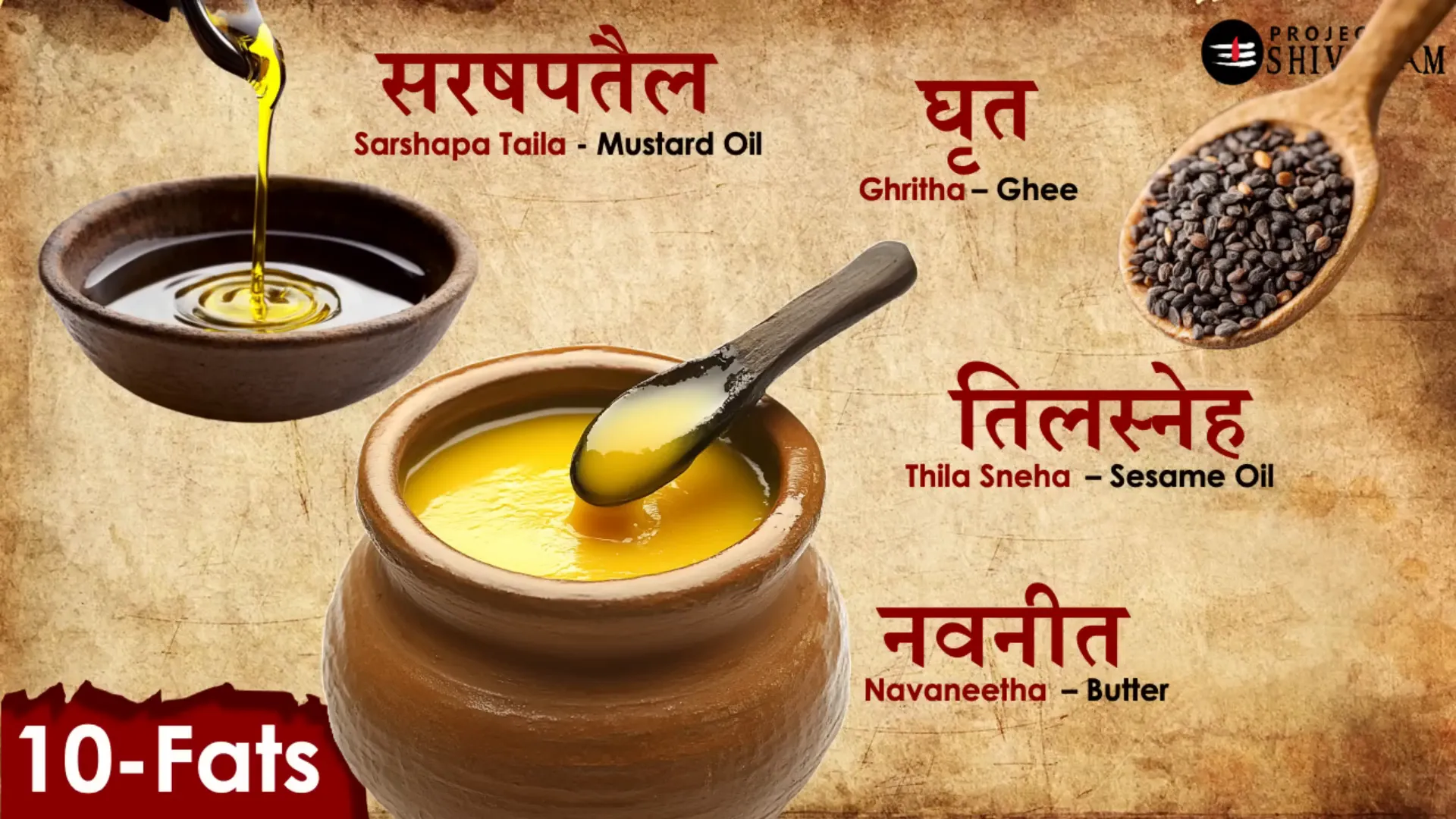
Other notable fats include Sarashpa Thaila (mustard oil) and Grita (ghee). The word Thaila has become synonymous with fats, highlighting the importance of these sources in our culinary history.
While there are various oils available today, this discussion focuses on those with deep antiquity in Indian culture.
Food Processing Techniques: Thermal, Mechanical, and Chemical
Food processing in ancient Bharat included thermal, mechanical, and chemical techniques. Thermal processing involves cooking with fire, and ancient scriptures describe various methods including soshanam (cooking without water), bhajanam (roasting), and odana (boiling).
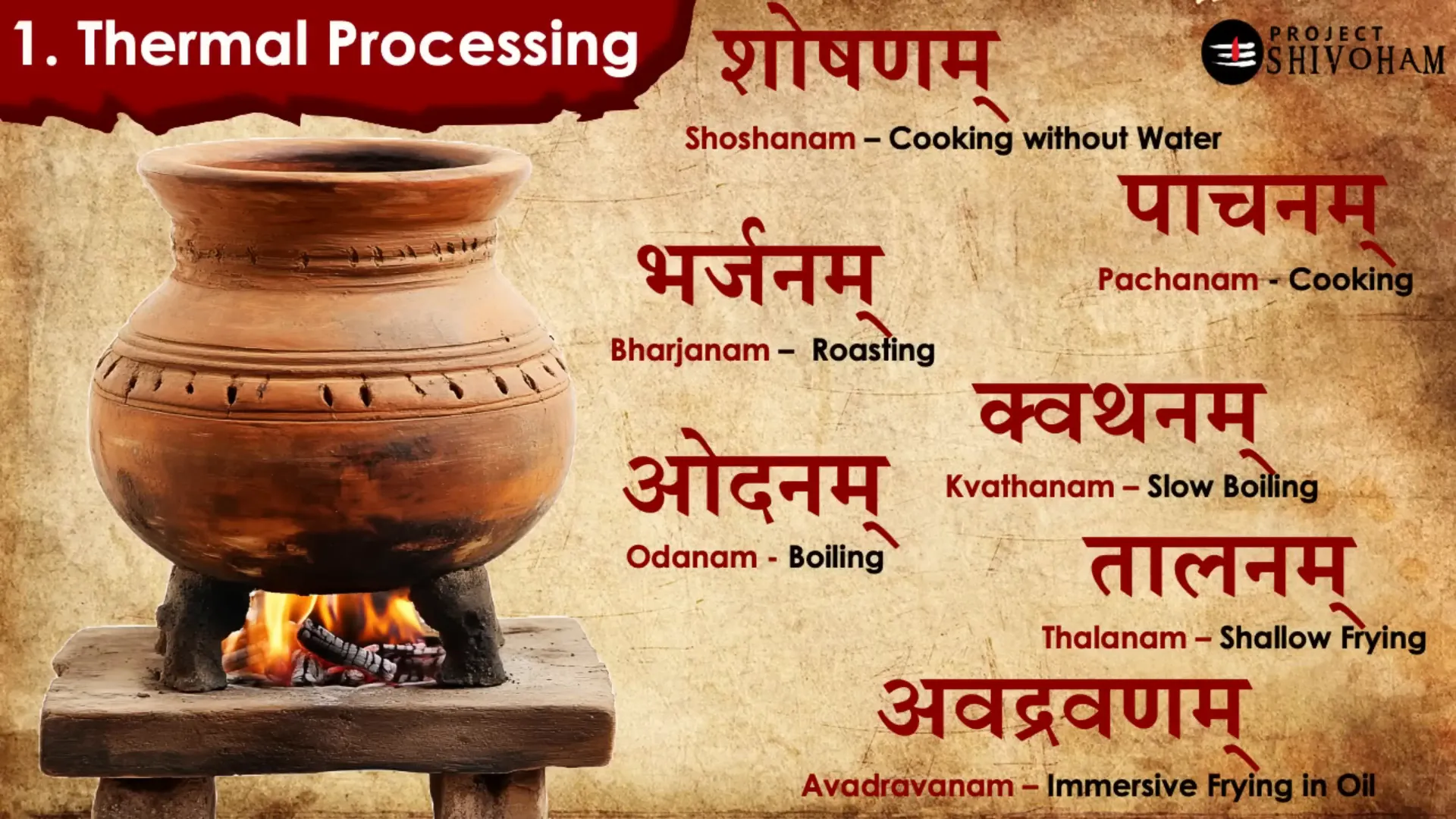
Mechanical processing includes techniques like Peshanam (grinding) and Mandhanam (kneading), emphasizing that some dishes do not require cooking but instead rely on mechanical preparation.
Chemical processing techniques, such as paripa kaha (fermentation) and achara karanam (pickling), were also essential. These methods allowed for food preservation and enhanced flavors, showcasing the ingenuity of ancient culinary practices.
The Typical Spread: What Did People Eat?
What did people eat in ancient Bharat? The diversity of food was vast, but a typical spread might include Udana (cooked rice), Soupa (lentil soup), and vayamjaka (grilled vegetables).
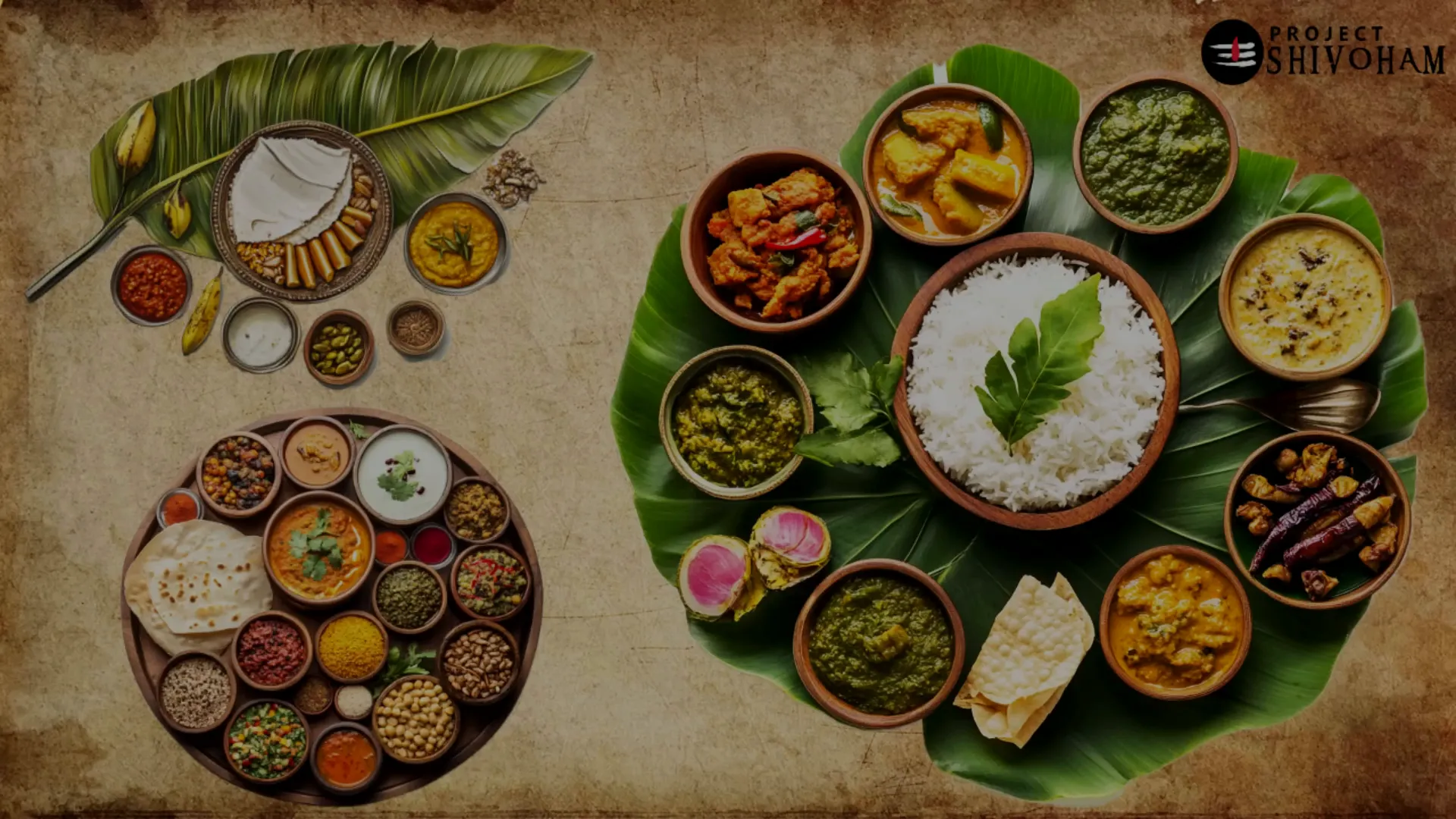
Other items would include shaka (vegetable curry), Mamsa (meat-based curry), and Bhakshir (snacks like murukulu or chakli). Desserts such as Payasil, made with rice or pulses and sweeteners, were also common.
This spread reflects a rich culinary tradition, showcasing the variety of flavors and ingredients that were part of everyday life in ancient Bharat.
Scriptural Sources and Timelines of Food Practices
Understanding the timeline of food practices in ancient Bharat involves recognizing key periods such as the Vedic era followed by the times of the Ramayana and Mahabharata. These epochs provide a cultural continuum that shapes our understanding of culinary traditions.
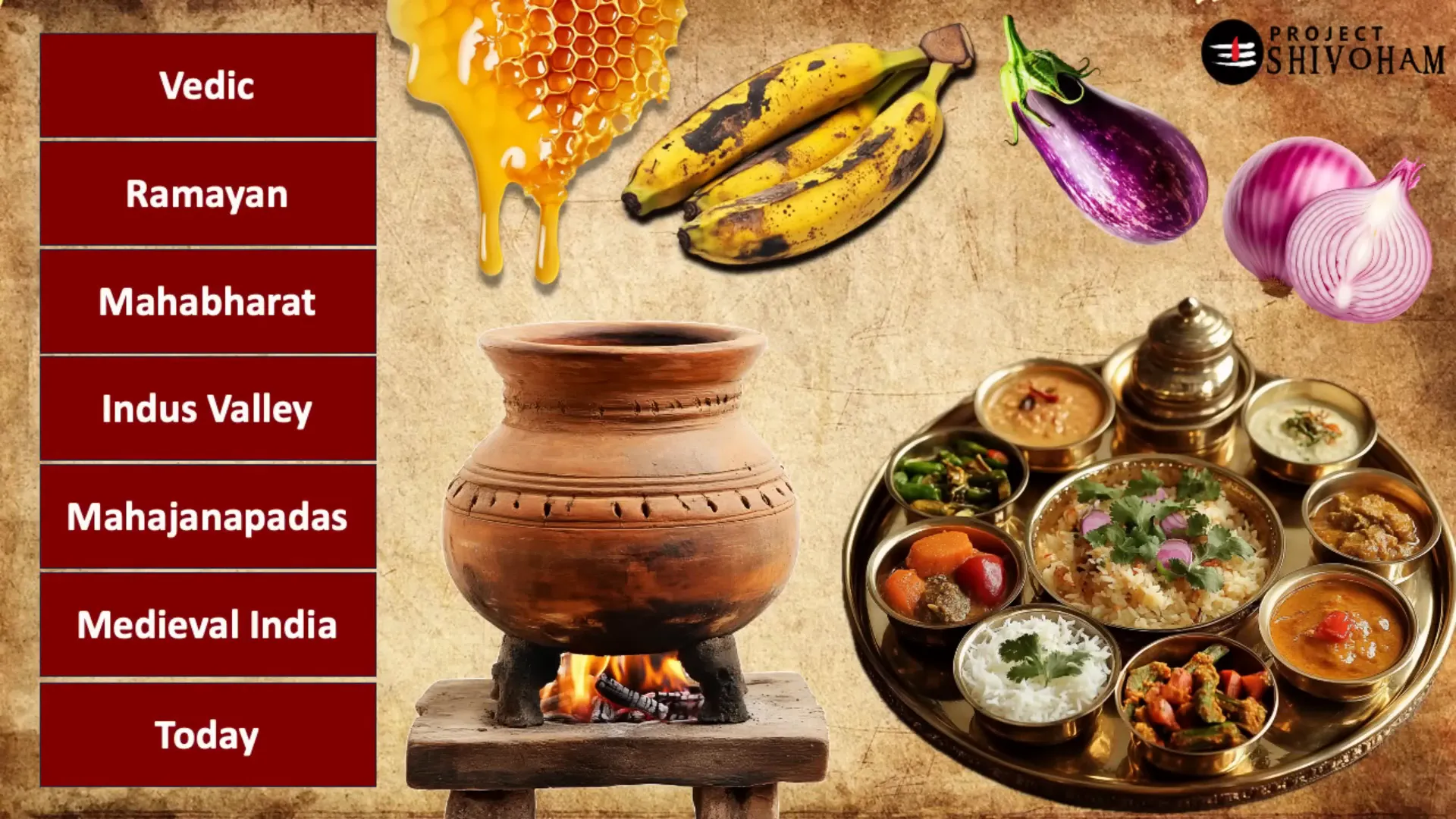
Ancient scriptures serve as primary sources for understanding food practices. For instance, the Vedas contain references to ritualistic cooking and specific food items like Soma, highlighting their significance in Vedic rituals.
These texts reveal how ancient peoples used various herbs and ingredients in their cooking, providing insight into the culinary landscape of Bharat.
Vedic Period: Rituals and Food
In the Vedic period, food was deeply intertwined with spiritual practices. The preparation of Soma involved specific rituals, as mentioned in the Rigveda, where it was described as a herbal drink prepared through a meticulous process.

Other references from the Yajurveda outline the use of cereals and lentils in offerings, emphasizing the significance of these ingredients in religious and cultural contexts. The use of honey, ghee, and barley in offerings further illustrates the complexity and richness of ancient culinary traditions.
This interplay between food and spirituality highlights how deeply embedded these practices were in the culture of ancient Bharat, revealing a sophisticated understanding of nutrition and ritual.
Ramayana: Culinary Insights from the Epic
The Ramayana presents a rich tapestry of food-related insights woven into its narrative. One notable instance occurs in the Ayodhya Kanda, where Bhagwan Shri Ram, Sita, and Lakshmana prepare for their grihapravesham in Panchavati. Lakshmana hunts a black antelope, roasting it over an open flame, showcasing the importance of meat in their rituals.
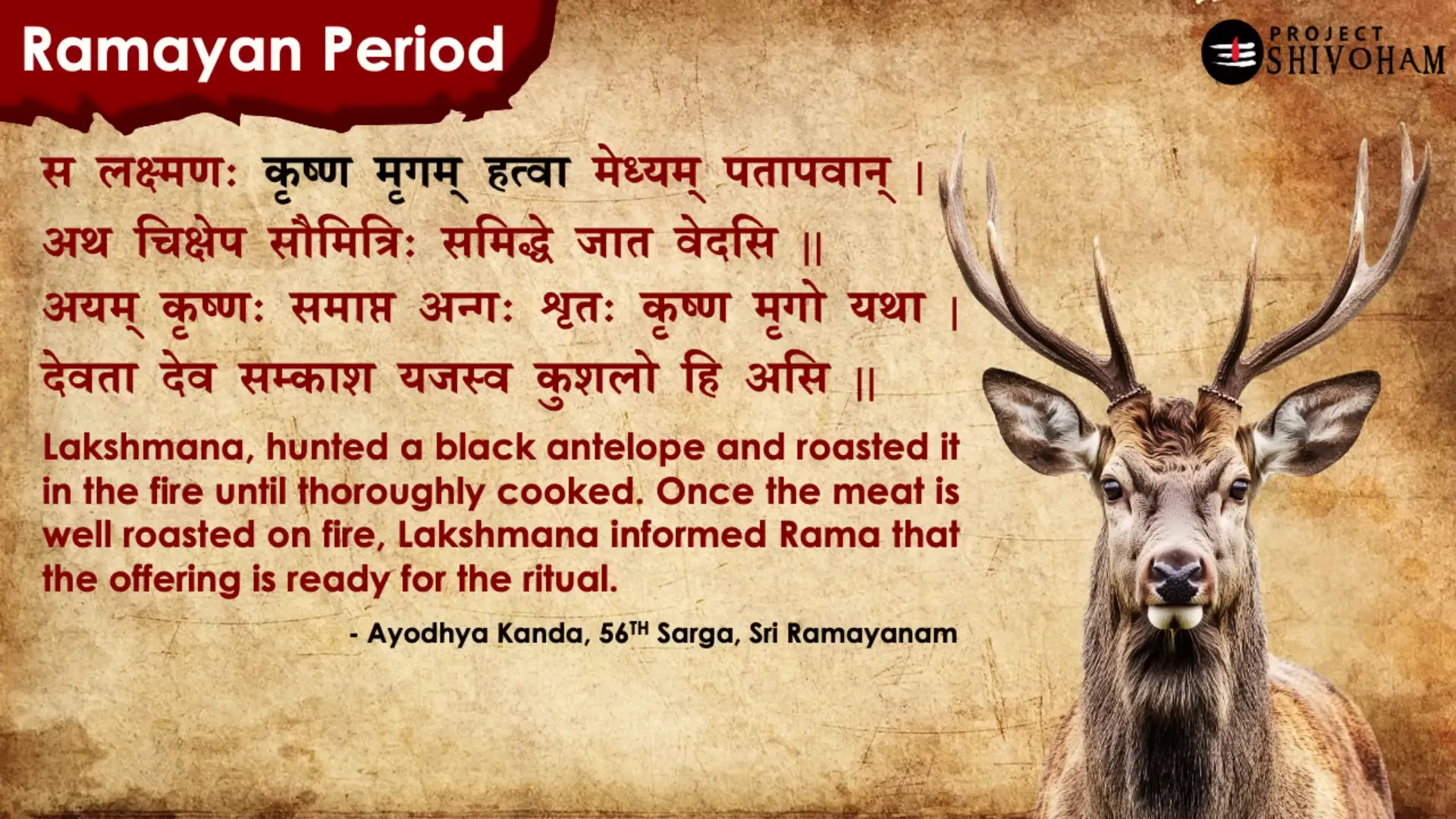
This act of cooking meat is not merely for sustenance; it is a sacred offering, intertwined with the Vedic rituals that highlight the significance of food in spiritual practices. The text describes how they offered cooked meat along with fruits, roots, and prayers, emphasizing that all types of food were accepted without discrimination during those times.
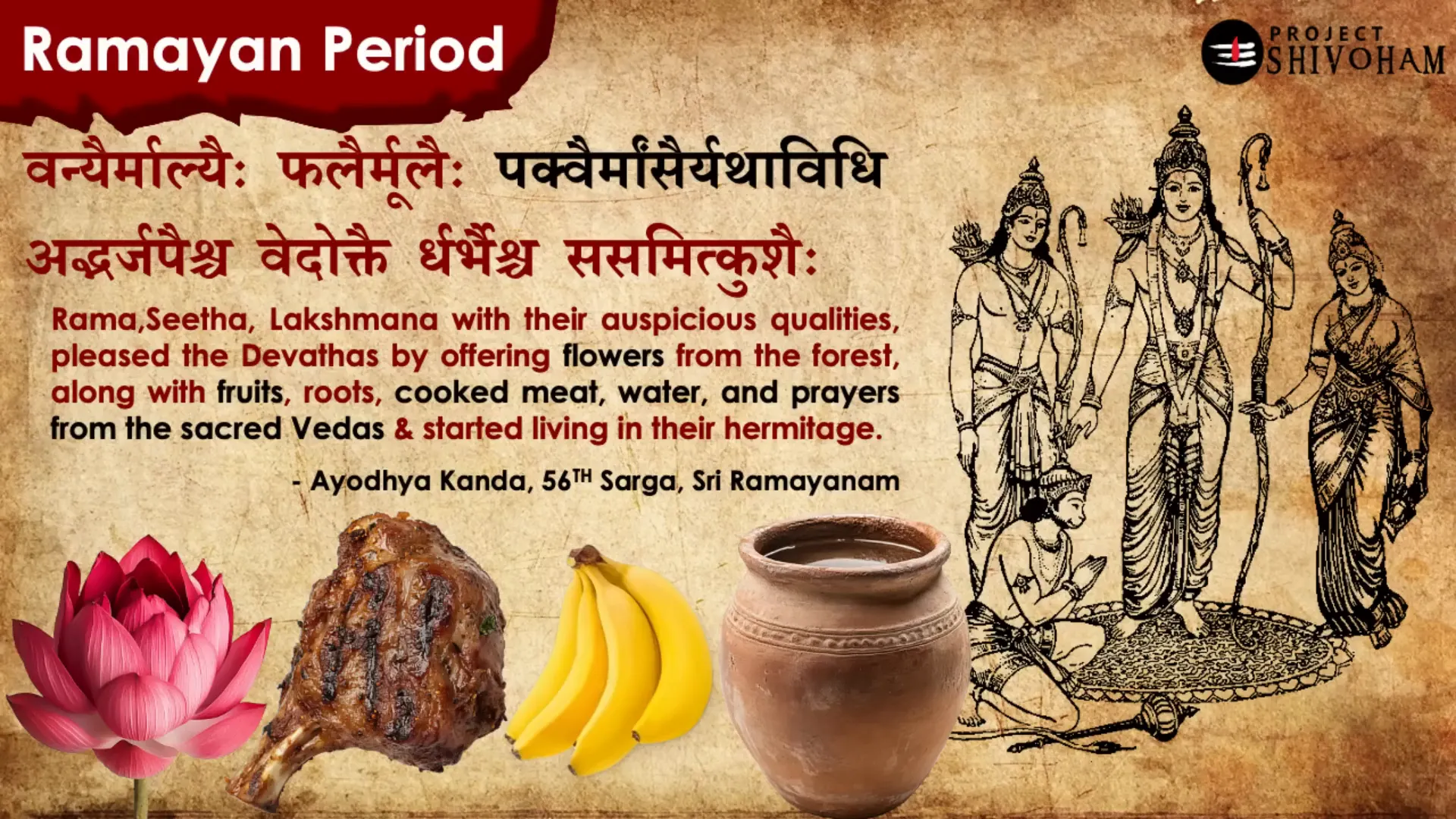
Interestingly, the Ramayana also mentions a variety of meats served in the palace of Ravana, including peacock, rooster, and porcupine, alongside grains and alcoholic beverages. This culinary diversity reflects the opulence of the royal court and the cultural significance of food as an integral part of their lifestyle.
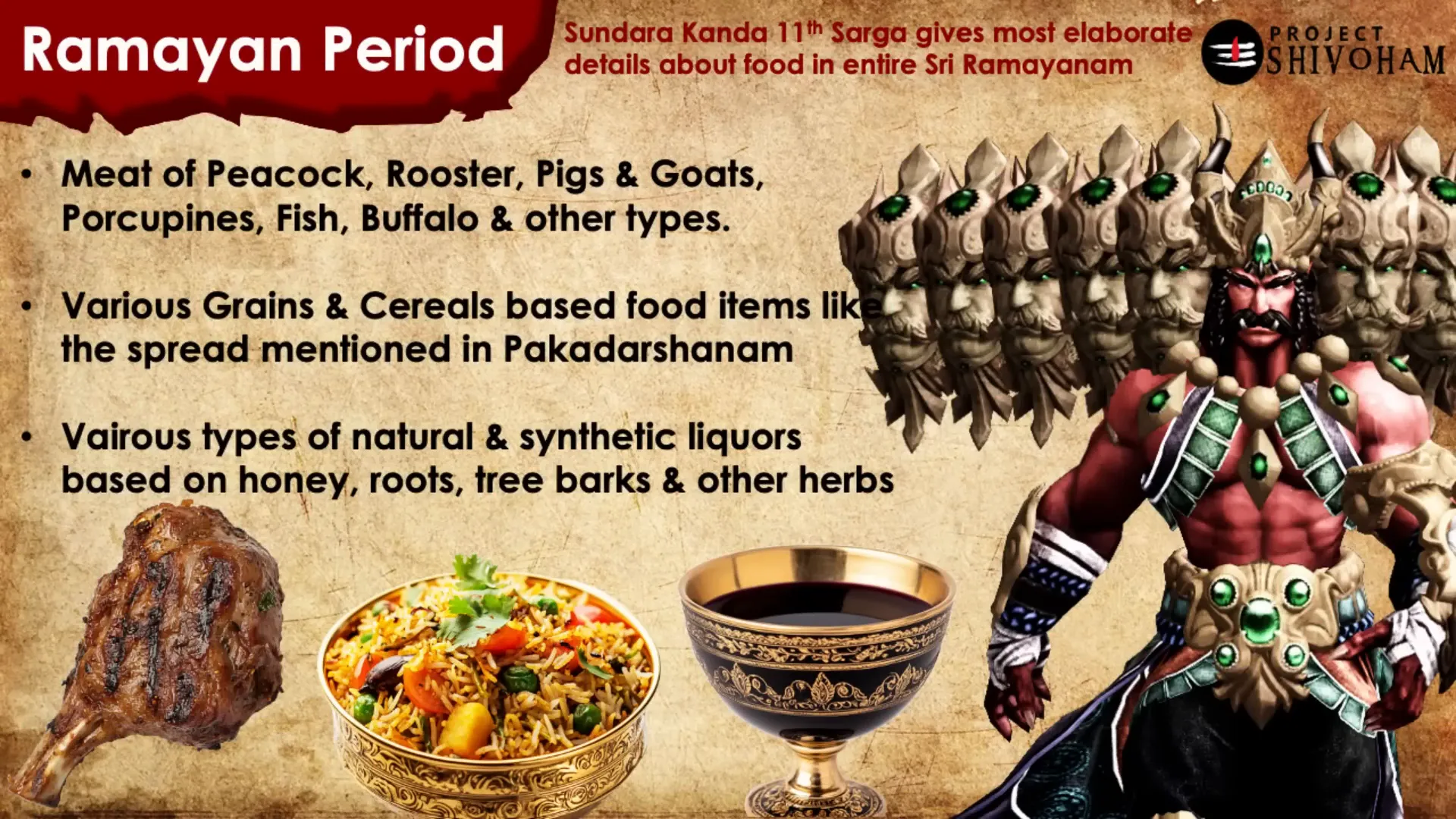
Mahabharata: Food References in the Epic
The Mahabharata offers profound insights into the dietary practices of ancient Bharat, particularly highlighting rice as a staple grain. Throughout the epic, rice is frequently mentioned as an essential part of offerings during Yajnas, symbolizing sustenance and prosperity.
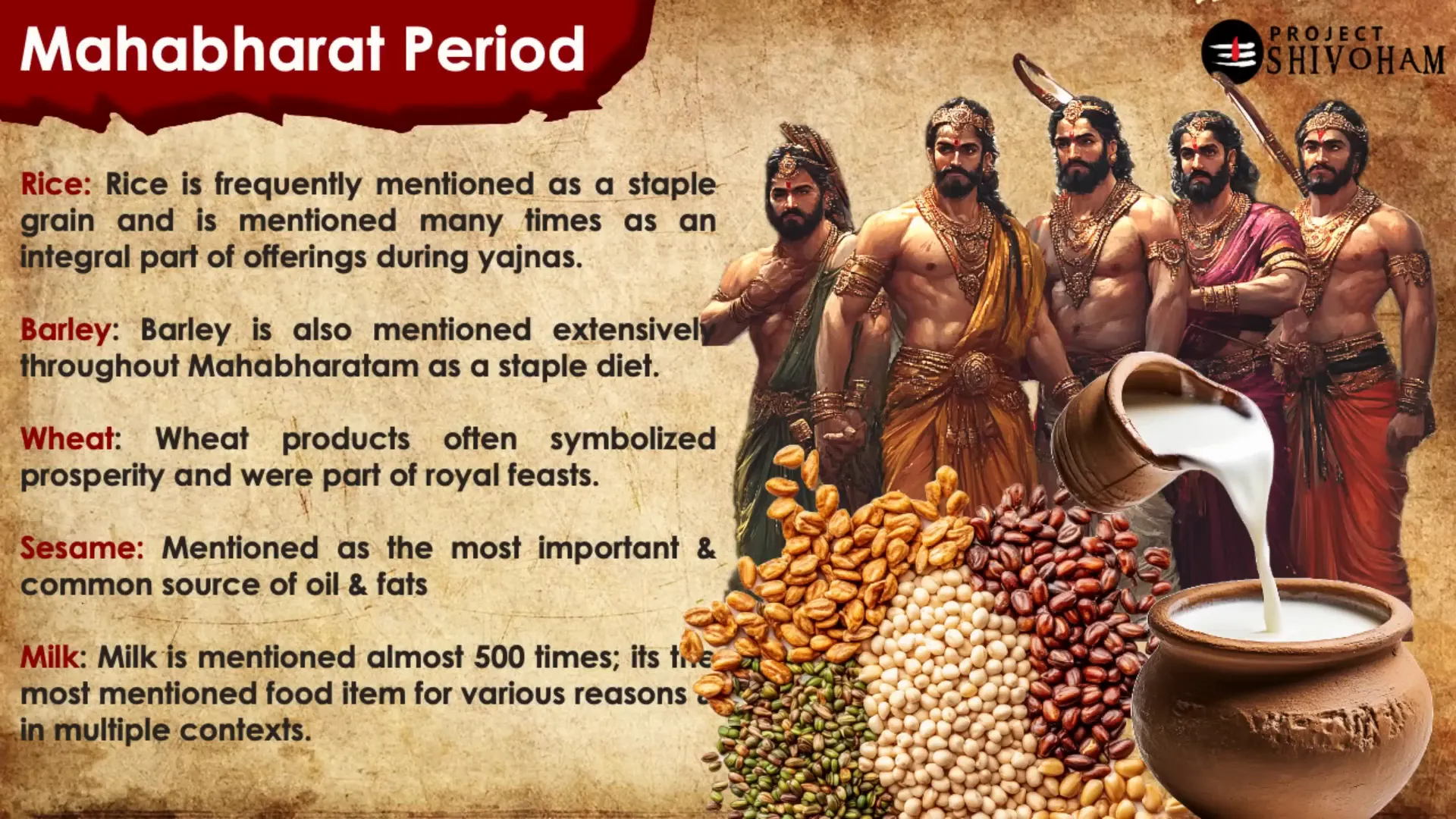
Barley and wheat are also noted, with barley holding a significant place in Bharatiya cuisine. Wheat products are often associated with prosperity, particularly in the context of royal feasts, illustrating the social and cultural dimensions of food in the epic.
Milk is perhaps the most mentioned food item, appearing nearly five hundred times, indicating its centrality in the diet of that era. The consumption of meat, particularly goat and deer, is also referenced, though it was typically reserved for special occasions or royal feasts, adhering to ethical considerations regarding its consumption.
Indus Valley Civilization: Evidence of Ancient Diet
The Indus Valley civilization, thriving around four thousand five hundred years ago, provides compelling evidence of dietary practices through archaeological findings. Staple grains such as wheat and barley were prevalent, alongside a diverse range of pulses, lentils, and chickpeas that formed the backbone of their diet.
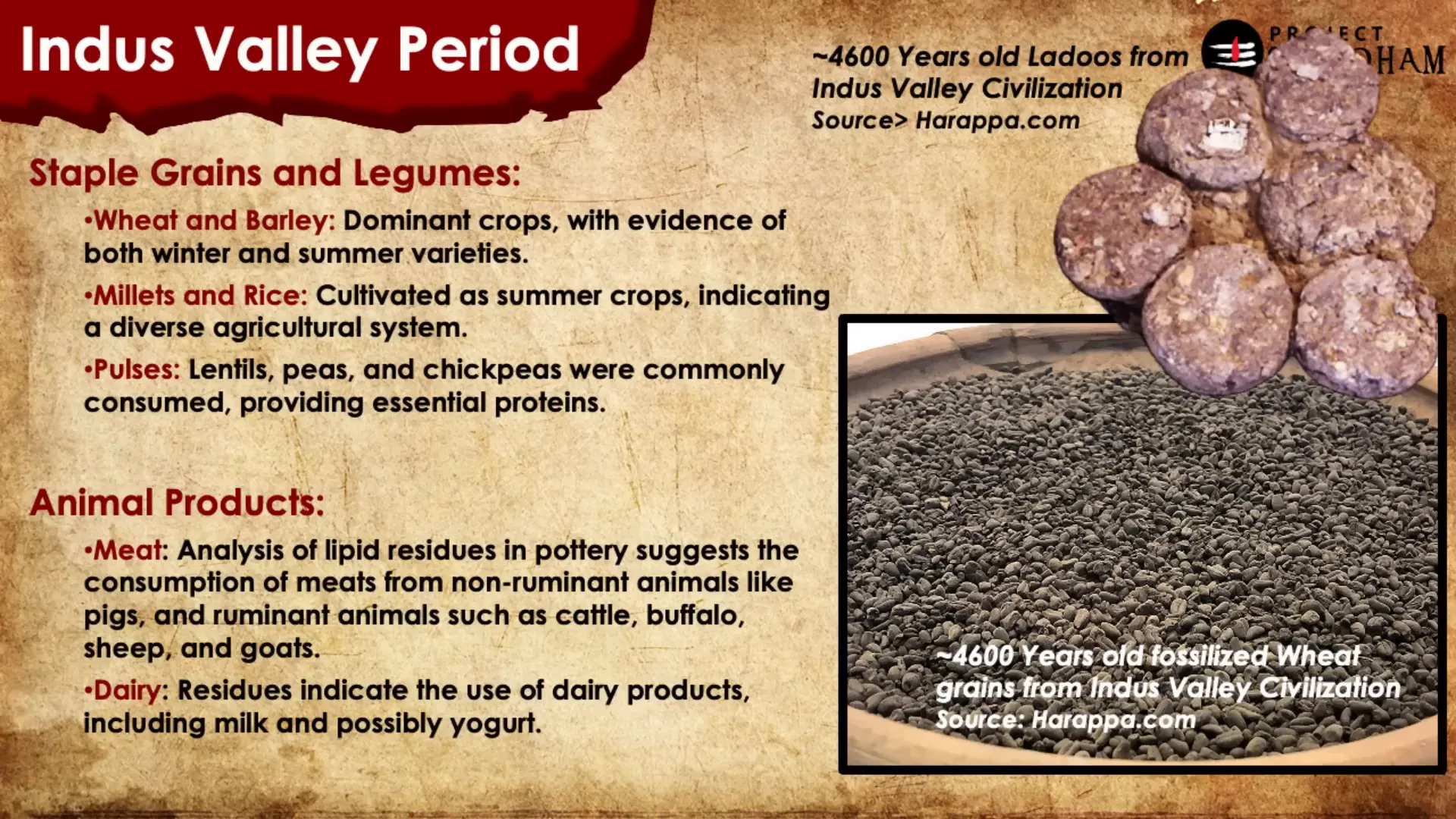
Interestingly, the discovery of dairy residues points to the use of milk and possibly yogurt, further emphasizing the agricultural sophistication of this civilization. Additionally, fossilized foods, including ladoos and lentils, have been found intact, offering a glimpse into their culinary practices.
Fruits like dates and melons were part of their diet, while vegetables such as mustard and leafy greens were cultivated, showcasing a varied and health-conscious approach to food.
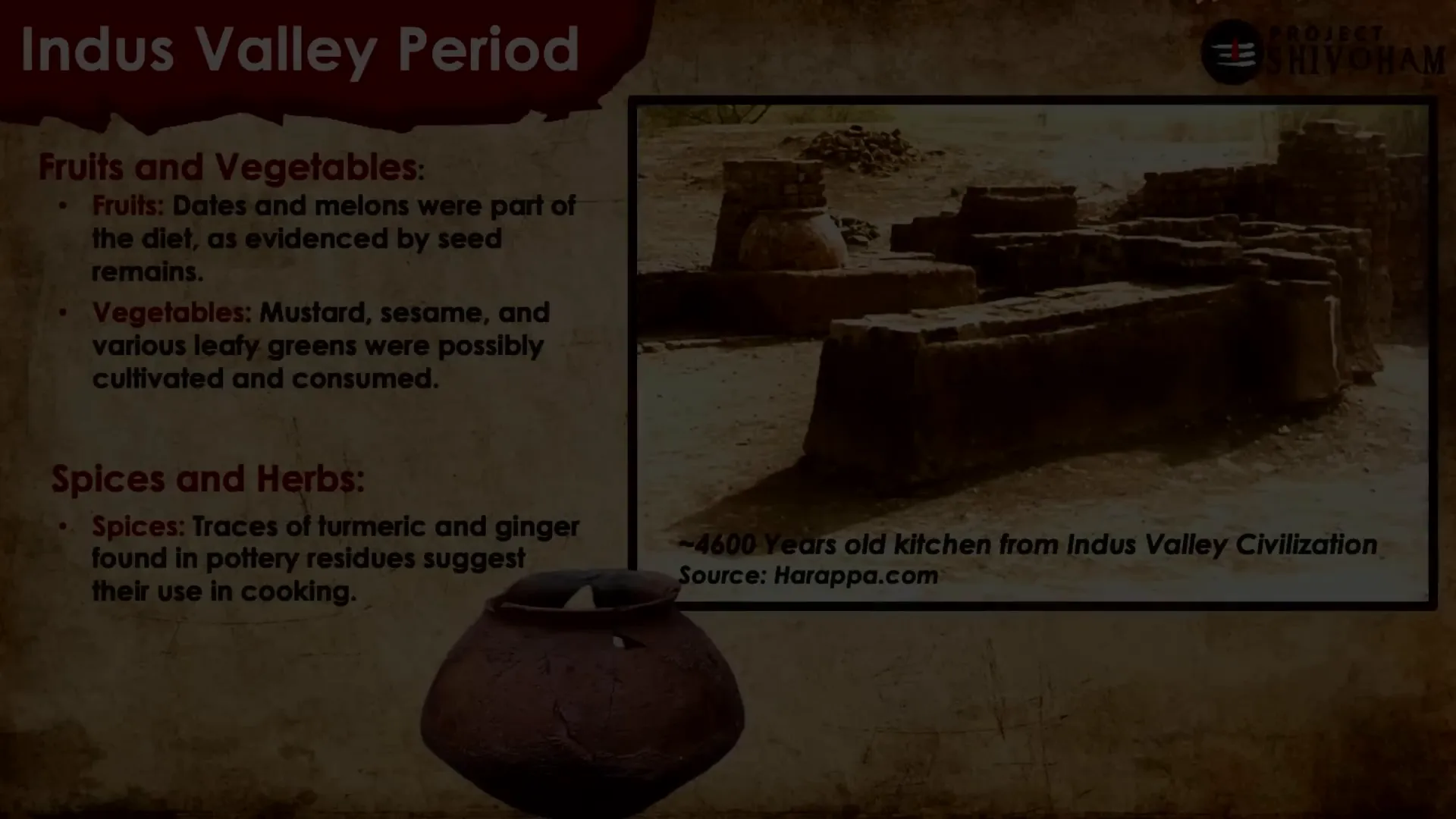
Mahajanapadas Period: Trends in Food Culture
During the Mahajanapadas period, from six hundred to three hundred BCE, food culture underwent significant transformations influenced by urbanization and religious movements. A notable trend was the rise of vegetarianism, largely due to the propagation of Buddhism and Jainism.
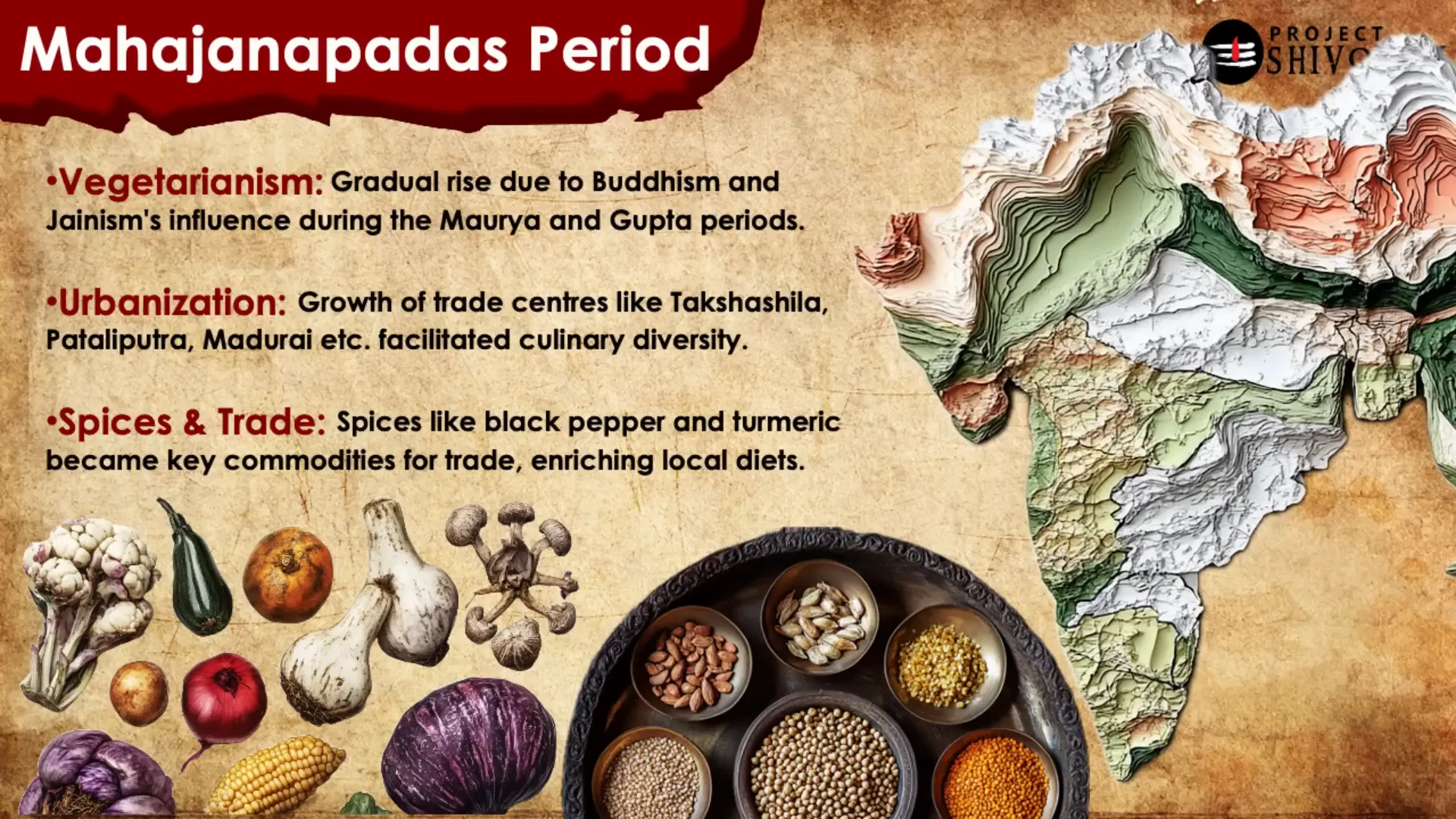
This shift marked a departure from the meat-centric diets of earlier periods, promoting a greater emphasis on plant-based foods. Concurrently, urban centers like Takshasila and Pataliputra emerged as culinary hubs, fostering diverse food practices and trade.
Spices became vital commodities in trade, enriching local diets and enhancing the flavors of food. The proliferation of spices not only added variety but also highlighted the interconnectedness of agriculture and commerce in shaping food culture.
The Origins of Biryani: A Culinary Exploration
As we delve into the origins of biryani, we uncover a dish that transcends regional boundaries. Historically, rice cooked with meat has been prevalent in various cultures, with parallels found in Mesopotamia and Africa, where similar dishes were prepared.
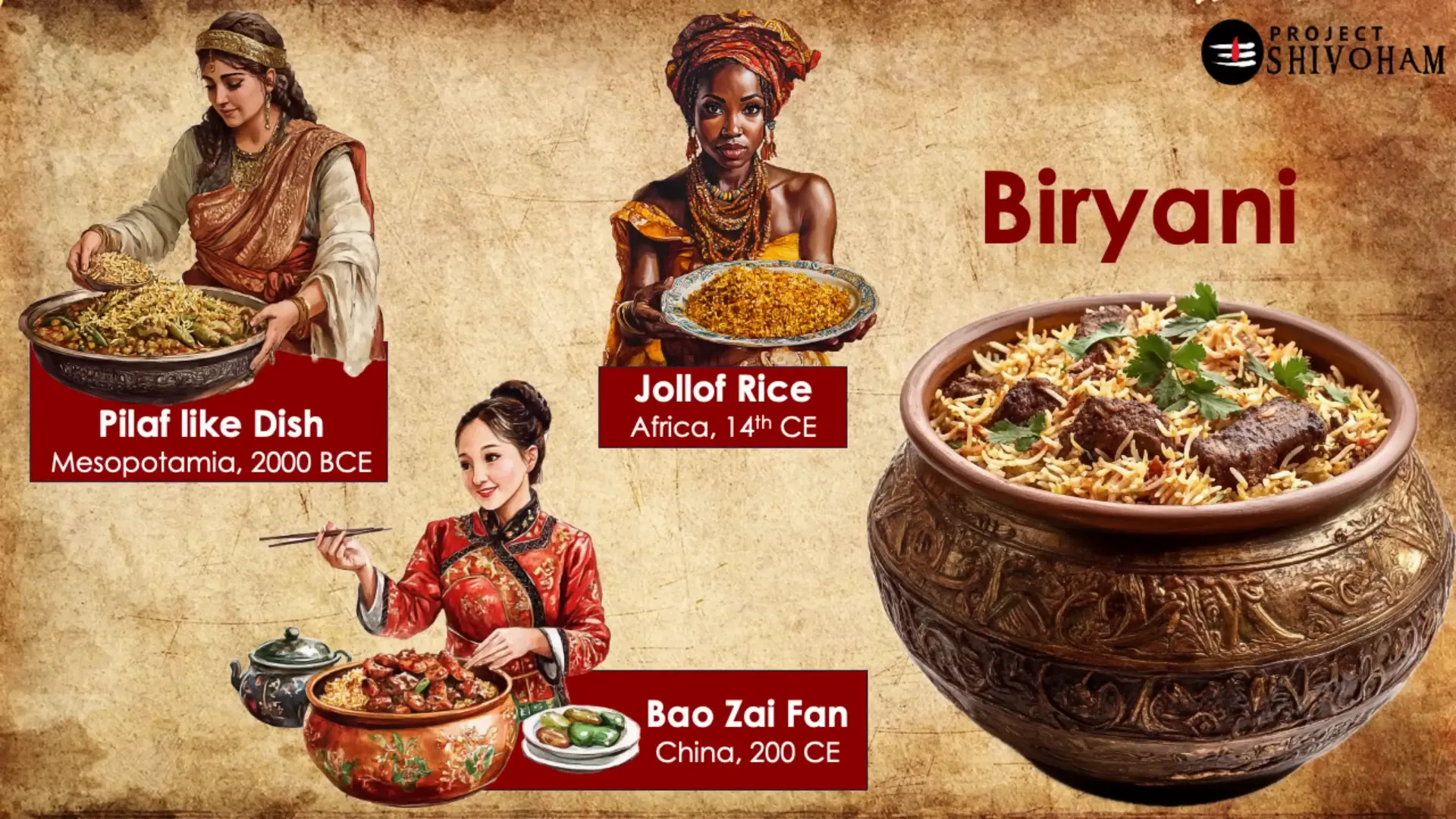
In Bharat, references to rice cooked with meat can be traced back to ancient scriptures, notably the Nala Maharaja krut pakadarpana, which elaborates on sixty-three varieties of rice dishes. This suggests that the culinary tradition of biryani has deep roots in Bharat’s history.
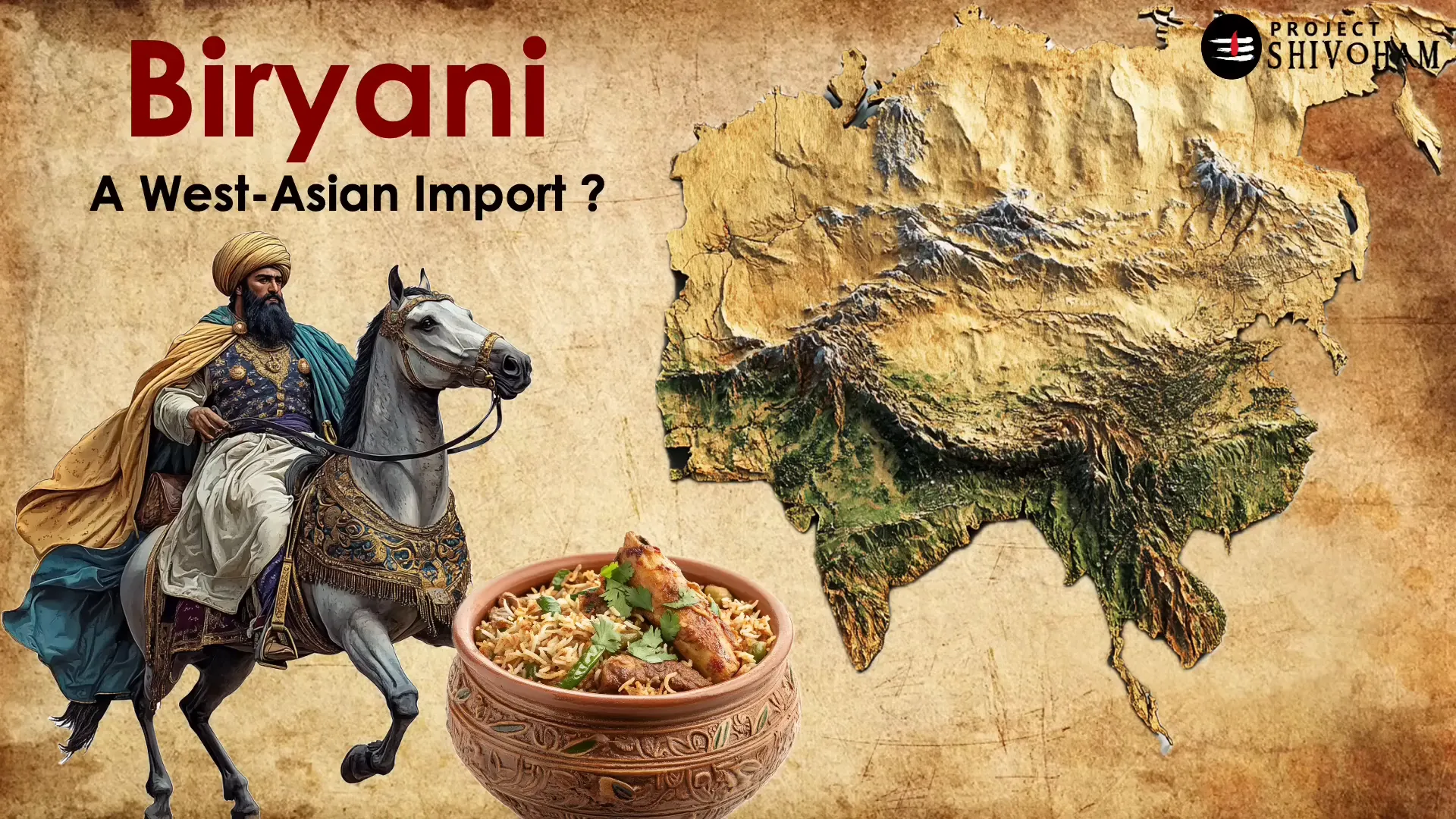
Moreover, the Brahmavana Suktam from the Adhravanavedam emphasizes the sacredness of boiling rice, associating it with divine reverence. The dish mamsa udanam, which refers to meat cooked with rice, illustrates the historical significance of this culinary practice.
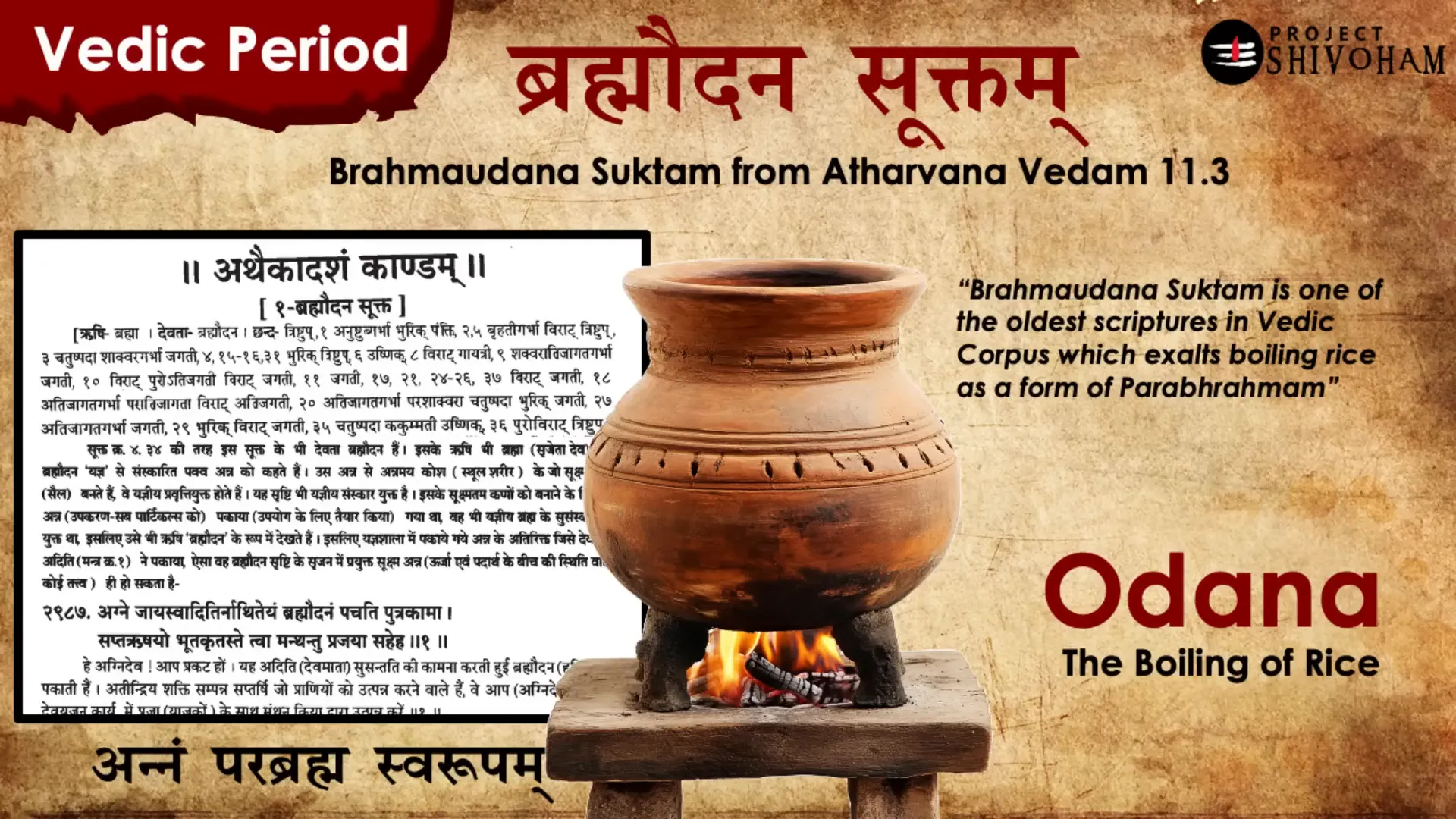
Conclusion: The Sacred Thread of Food in Bharat
Food in Bharat is not merely about sustenance; it is a sacred thread that binds history, spirituality, and identity. From the Vedic Yajnas to the culinary practices of the Ramayana and Mahabharata, each era has contributed to Bharat’s rich food culture.
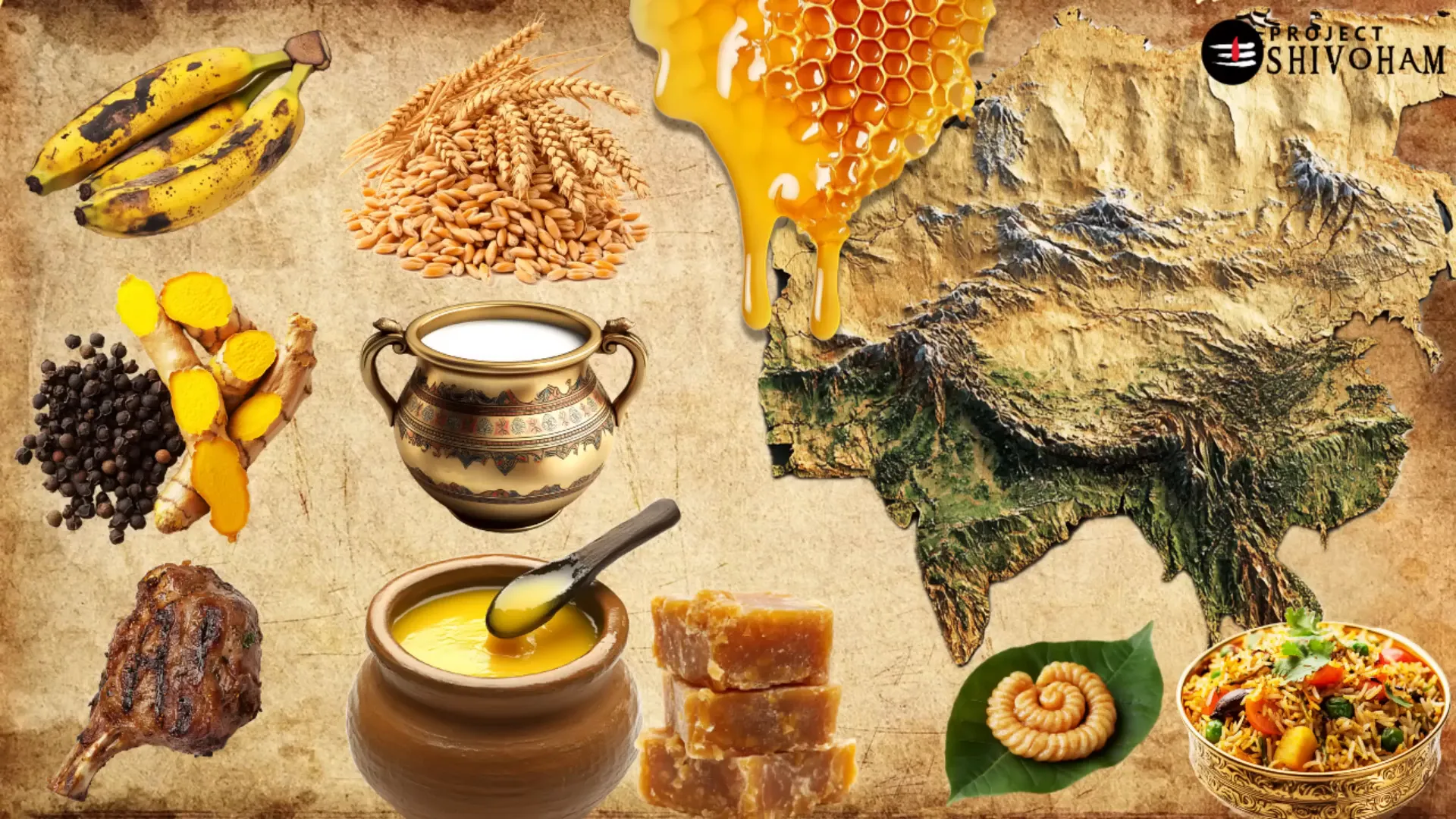
This journey through time reveals how food reflects the resilience, diversity, and inclusivity of our civilization. As we explore the culinary heritage of Bharat, we discover that food transcends mere nourishment, embodying unity, tradition, and a profound connection to our roots.
FAQs
- What types of food were common in ancient Bharat? Ancient Bharat had a diverse diet that included cereals, pulses, fruits, vegetables, dairy, and meat, depending on the region and period.
- How did food practices evolve over time? Food practices evolved significantly from the Vedic period through the Ramayana and Mahabharata, with shifts towards vegetarianism influenced by religious movements.
- What is the significance of biryani in Indian cuisine? Biryani represents a fusion of culinary traditions, with deep historical roots in Bharat, showcasing the cultural exchange and evolution of cooking methods.
This article was created from the video The History of Food in Ancient India – From Vedic Period till today… with the help of AI. Thanks to Aravind Markandeya, Project Shivoham.